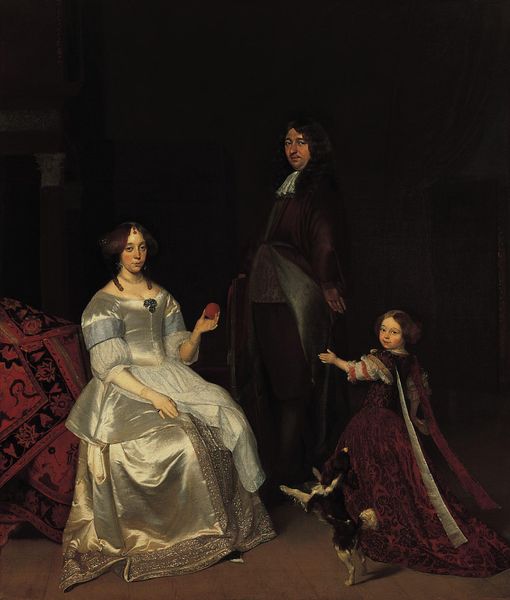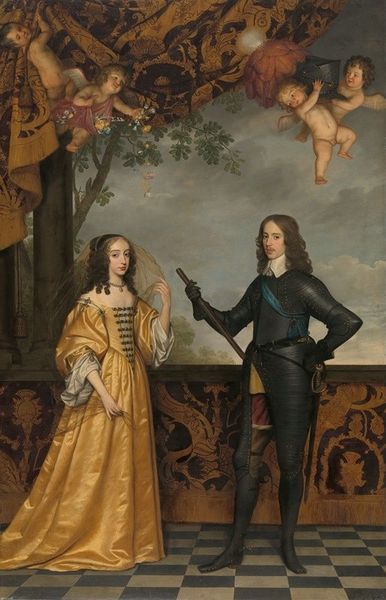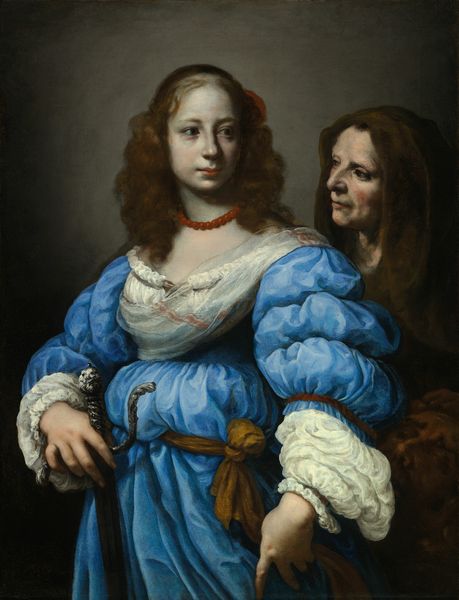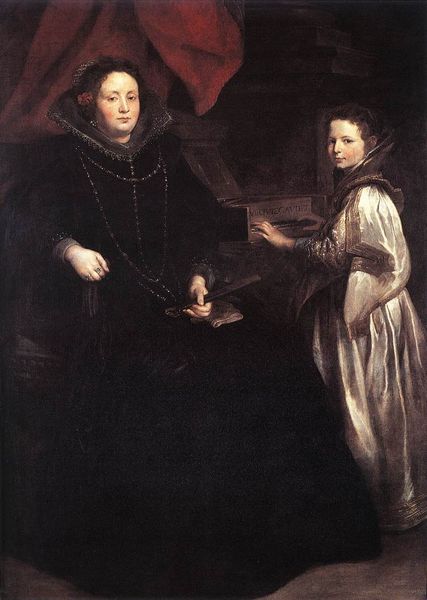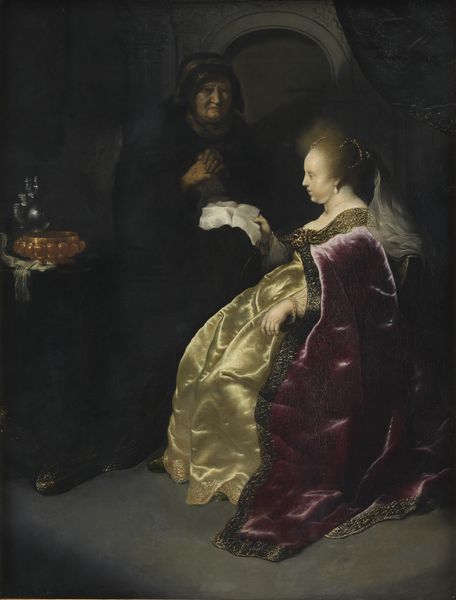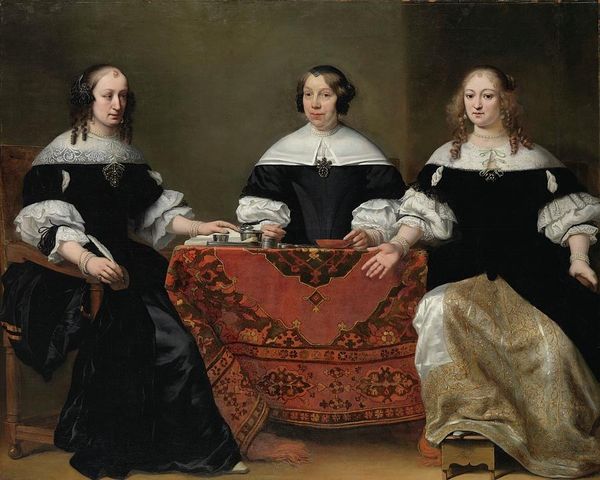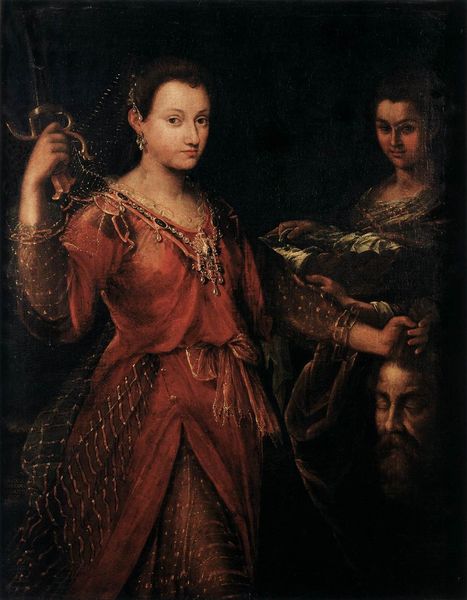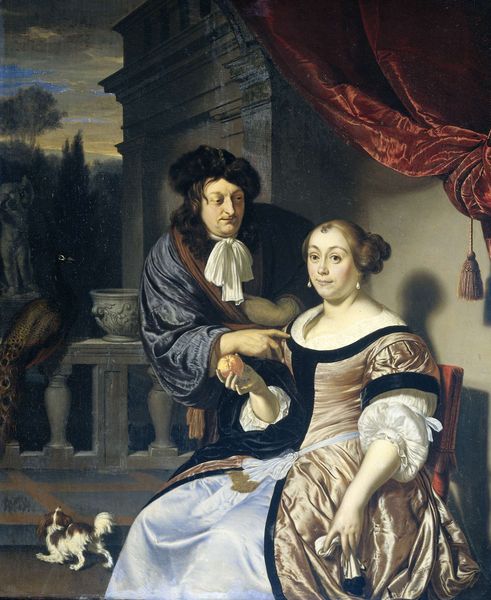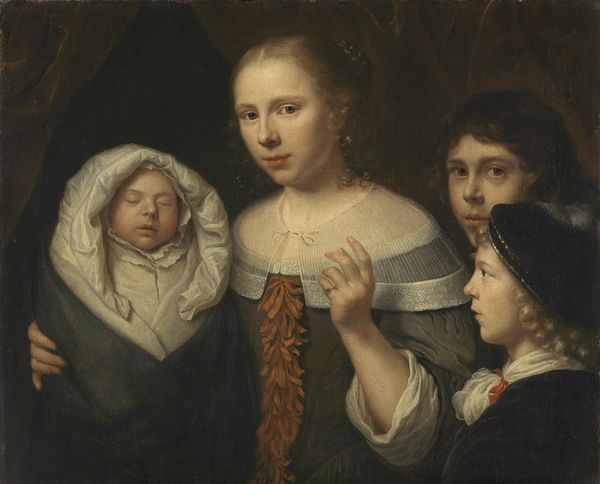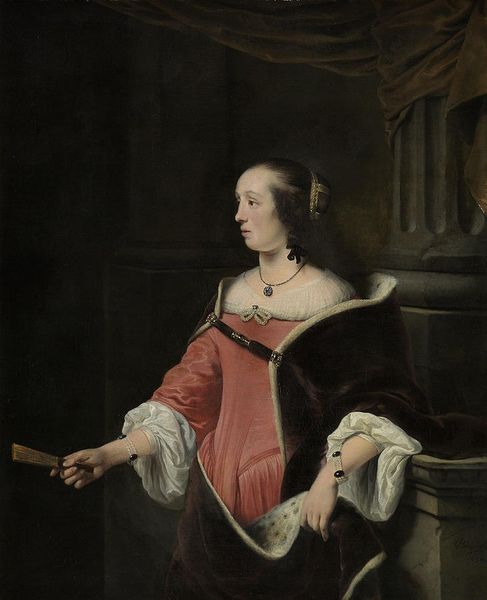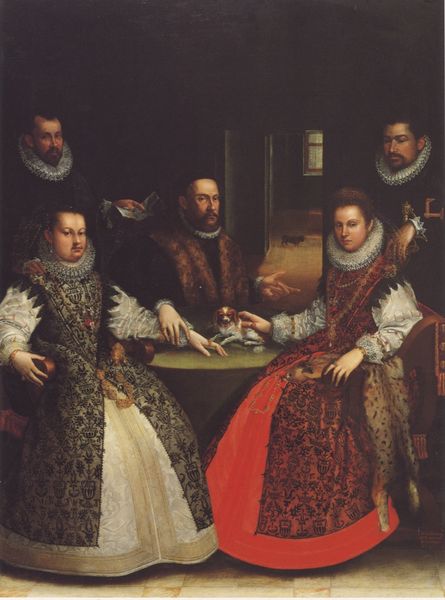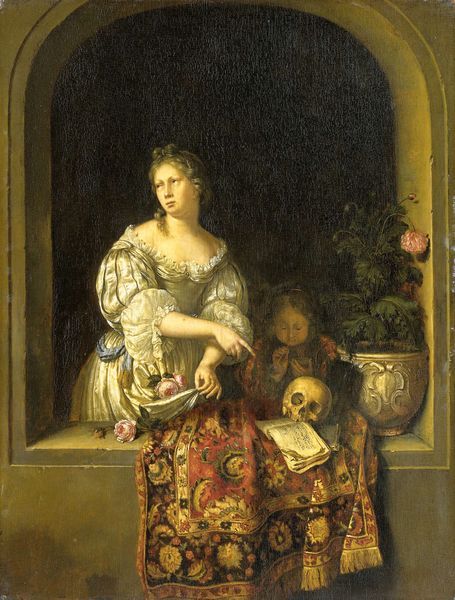
painting, oil-paint
#
portrait
#
baroque
#
painting
#
oil-paint
#
dog
#
figuration
#
genre-painting
Dimensions: height 63 cm, width 53 cm
Copyright: Rijks Museum: Open Domain
Editor: This is "Portrait of a Woman and a Man in an Interior" by Matthias Wulfraet, created in 1694 using oil paint. I’m struck by how dark it is, but then there's this airy landscape in the background through the archway. What elements do you find most compelling here? Curator: Formally, the composition invites a nuanced reading. The tenebrism, that stark contrast between light and shadow, undeniably directs our gaze. Notice how the artist uses chiaroscuro to sculpt the figures, giving them a pronounced three-dimensionality, and how the textural contrast between the dark fabric and the pristine architecture is striking. Consider, also, the placement of the figures in relation to the implied vanishing point beyond the archway. Does that receding space invite a feeling of balance, or a disruption of symmetry? Editor: It's a little of both, actually! The couple is clearly the focus, but that little glimpse of a brighter world kind of pulls me out of the room. The small dog almost feels like it is anchoring the darkness, though. Curator: Precisely. The animal offers a grounding element, preventing the darkness from becoming all-consuming. Consider also the objects they hold. What function do they perform in your interpretation of the piece’s formal arrangement? Editor: Well, the man holds a glass, but the woman holds an apple. I don't know, are they references to knowledge or temptation? Curator: It is that contrast which elevates the painting from mere representation. Without resorting to simplistic iconographic readings, consider how their inclusion alters the visual dynamic between the figures, how the painting plays upon contrasting and competing semiotic structures, disrupting simple decoding of a 'marital portrait'. Editor: So, it’s not necessarily about what the objects symbolize, but how they contribute to the visual relationships within the painting itself? Curator: Exactly! Understanding how the constituent components operate within the pictorial space enables an aesthetic appreciation independent of external references. Editor: That's such a useful way to approach art. Thanks! Curator: My pleasure, reflecting upon the compositional organization grants us access to a fuller understanding.
Comments
No comments
Be the first to comment and join the conversation on the ultimate creative platform.
